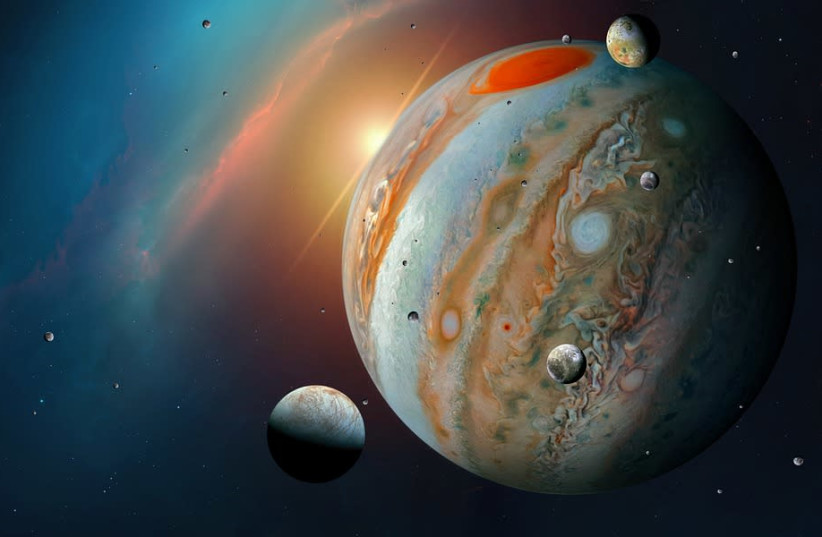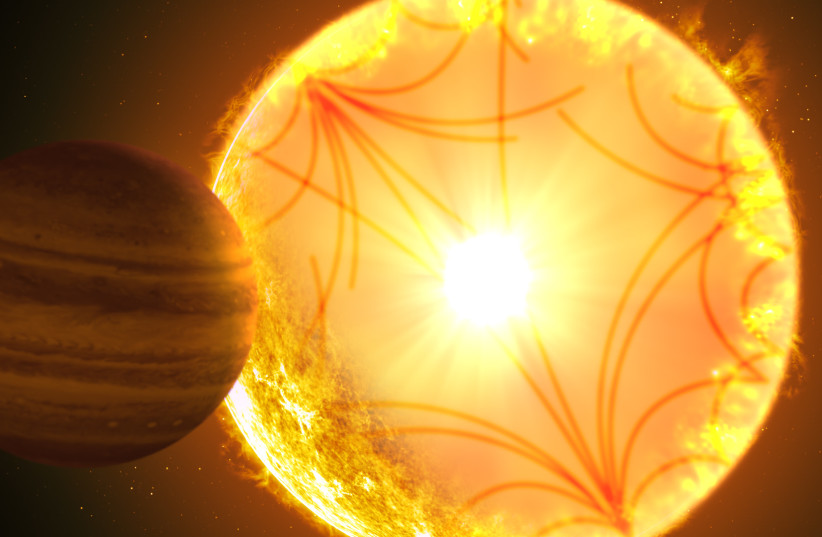'Hot Jupiter' alien planet spiraling to its doom around aging star - study
The discovery will serve as a "celestial laboratory for years to come" and will help astronomers better understand tidal dynamics.
A hot Jupiter planet whose orbit is spiraling ever closer to an older host star was observed by astronomers for the first time, setting a new benchmark for understanding tidal physics at the end of the planetary life cycle.
The doomed alien dubbed Kepler-1658b planet will spiral closer to the old star until its inevitable collision and obliteration, a peer-reviewed study published on December 19 in The Astrophysical Journal Letters found.
Will earth share the same fate?
"We've previously detected evidence for exoplanets inspiraling toward their stars, but we have never before seen such a planet around an evolved star," said Shreyas Vissapragada, a 51 Pegasi b Fellow at the Center for Astrophysics at Harvard & Smithsonian and lead author of the new study.
"Theory predicts that evolved stars are very effective at sapping energy from their planets' orbits, and now we can test those theories with observations."
Death by a collision with a star is what ultimately could be earth's fate as well, billions of years from now.

The cause for Kepler-1658b's spiraling death is tides. Like with our world and the moon, tides are generated by the gravitational interplay between the orbiting bodies. Depending on the distance, the tidal interactions can cause the bodies to push away from each other, which is the case between earth and the moon - or, like in the case of the doomed Kepler-1658, pull them ever closer.
These dynamics are not fully understood yet and astronomers hope that observing Kepler-1658b's slow death can help them understand it better.
This bizarre world appears to be the second-hottest known exoplanet as well. Astronomers have broken yet another record, spotting a new gas giant with the shortest known orbit. The world takes just 16 hours to circle its star — but someday, the dance may come to an abrupt end. The newly announced exoplanet belongs to a category scientists refer to as "hot Jupiters." These worlds are built more or less like our solar system's behemoth, but orbit much closer to their stars, hence the nickname. Although astronomers have identified more than 400 hot Jupiters to date, researchers say none are quite like the new discovery, which is designated TOI-2109b.
Why the strange name?
The strange name of the planet comes from the fact that it was discovered with the Kepler space telescope, which is part of a mission looking for new planets outside our solar system. Even though it was the first planet Kepler ever observed, it took nearly a decade to finally confirm the planet's existence which then entered the catalog as the 1658th discovery.
"Now that we have evidence of inspiraling of a planet around an evolved star, we can really start to refine our models of tidal physics," Vissapragada says. "The Kepler-1658 system can serve as a celestial laboratory in this way for years to come, and with any luck, there will soon be many more of these labs."
Kepler-1658b's mass and size are on par with our solar system's Jupiter, which is why it is a so-called hot Jupiter. Unlike our solar system's Jupiter, it is in an ultra-close orbit to its host star. The distance is only an eighth of the space between our Sun and its tightest orbiting planet, Mercury, making the decay of its orbit certain to end in its destruction.
PLEASE RECOMMEND THIS PAGE & FOLLOW THE SPUTNIKS ORBIT AT HTTPS://DISQUS.COM/HOME/FORUM/THESPUTNIKSORBIT-BLOGSPOT-COM



No comments:
Post a Comment